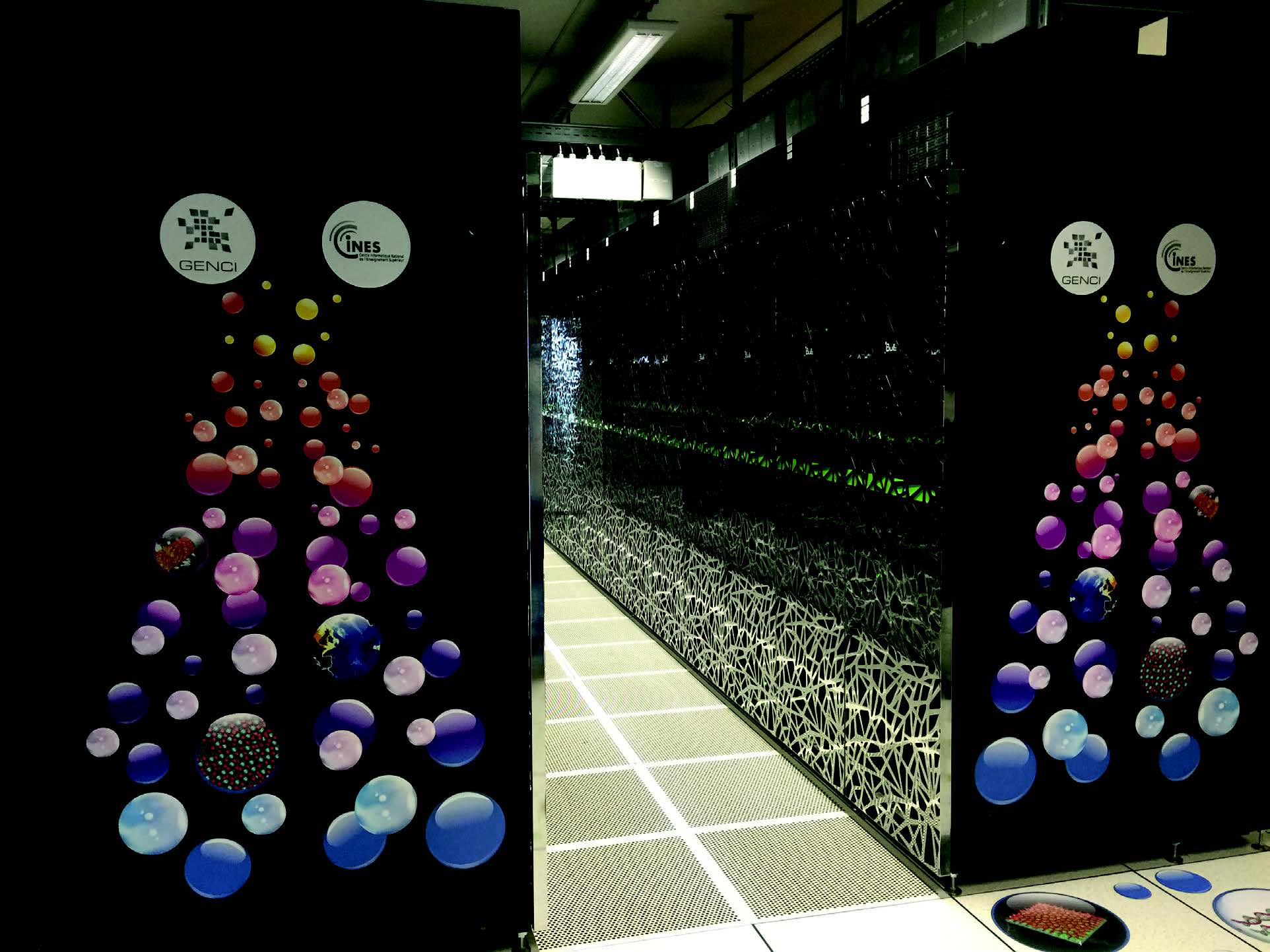GENCI, CEA, CPU and Atos arm European scientists against COVID19 with HPC facilities
Paris, April 28, 2020
Two of the most impressive supercomputers in France, Joliot-Curie, operated at the CEA’s supercomputing center (TGCC), and Occigen, operated at CPU’s supercomputing center (CINES), are supplying urgent computing access to large computer system sources to European study groups concerned in the combat from COVID-19. The purpose is to complete epidemiological reports of COVID-19 virus spread, comprehend its molecular composition and conduct and massively monitor and check likely long term molecules, to speed up the look for for an effective vaccine and assistance the international combat from the virus. Both equally supercomputers are dependent on Atos’ BullSequana system, international chief in digital transformation.
Just after only a number of months of GENCI’s COVID 19 rapid track access, GENCI, the French countrywide superior-efficiency computing agency, announces that there are now a lot more than twenty scientifically various COVID19 assignments, managing on its 3 countrywide supercomputers among the which are Joliot-Curie and Occigen, with each other with Jean Zay at IDRIS, with the dedicated help of assistance groups in these centers.
Joliot-Curie at TGCC
Joliot-Curie, with its 22 petaflop/s, is the most impressive supercomputer in France dedicated to academic and industrial open study. As section of PRACE (Partnership for Superior Computing in Europe), European scientists are relying on Joliot-Curie to run now a few COVID-19 large scale assignments in the context of the PRACE COVID-19 Fast Observe connect with. One job simulates the purposeful proteins of the SARS-CoV-2 virus developed from thousands and thousands of atoms to comprehend the mechanisms of the virus an infection in purchase to build therapeutics. The other job takes advantage of computational screening, a very well-identified procedure made use of in drug discovery, to determine and enhance viral protein inhibitors, molecules which are able of blocking the SARS-Cov-2 protein. This job could help supporting the development of a remedy to gradual down the COVID-19 outbreak.
The final job combines the review of the effect of antimalarial drugs on several human coronary heart tempo varieties getting into account a assortment of comorbidities that may well be present in the infected population, and also takes advantage of computational fluid dynamics (CFD) to superior comprehend the intricate hemodynamics associated with Nord-South Syndrome.

In addition to these PRACE COVID-19 Fast Observe assignments, groups of scientists are carrying out preparatory simulations on precedence countrywide allocations of computing ability on the Joliot-Curie supercomputer. For instance, scientists from the Grenoble Interdisciplinary Research Institute (IRIG) and the CEA’s Joliot Institute are operating on the look for of inhibitors in COVID-19. The SPIKE protein enables the virus to penetrate the mobile membrane. Many thanks to the simulation of the electronic composition of the protein and the associated inhibitor, it is feasible to offer specific details on the power of the inhibition but also structural details to determine the amino acids anxious and their associated polarities. This first operate designed it feasible to validate the strategy and as a result to submit a 15-million-hour job to PRACE to review the microscopic and thermodynamic aspects that may well or may well not favour the conversation in between the major SARS-CoV-2 protease and promising new inhibitors. The aim is to develop an ab initio in silico resource to estimate precisely the conversation properties of proteins interacting with all varieties of ligand people.
Occigen at CINES
Among the the COVID-19 related assignments on Occigen, scientists are managing simulations to review the SARS-Cov-2 helicase enzymes in more detail, in purchase to superior comprehend the genetic make-up of the virus. It is also becoming massively made use of – every day past forty,000 cores, all around fifty percent of the full Occigen’s ability shaped by 86,000 cores for 3.5 petaflop/s – with computational screening methods, to almost check a lot more than one.5 billion molecules a thousand of which will be synthesized and tested in labs for their potential to inhibit SARS-Cov-2. The scale of this digital screening is unparalleled and is only designed feasible because of to the computing electricity of the supercomputer.

Stephane Requena, CTO of GENCI, reported: “We’re proud with the 3 countrywide centers to be in combat from COVID-19 and that our impressive supercomputing and AI capabilities are becoming made use of by scientists to lead to these initiatives. We hope that these computational findings from the twenty+ assignments at this time managing on our devices, will assistance scientists and scientists to comprehend a lot more about the virus and in the end help build a remedy to cease this pandemic.”
Pierre Barnabé, Head of Community Sector & Defense and Head of Large Info & Cybersecurity, Atos, added: “We are honored to assistance those people scientists and scientists in their operate to help combat from COVID-19. By making use of the capability of our BullSequana supercomputers, which run hundreds of times more quickly than typical desktops, we are enabling them to help you save important time and serving to uncover a overcome to this pandemic.”
Christine Ménaché, Head of the CEA’s Incredibly Substantial Computing Centre (TGCC) and Boris Dintrans, Director of CINES jointly state: “All the TGCC’s and CINES’s assistance groups have been mobilized in a potent spirit of solidarity to meet the anticipations of all users and in particular these scientific assignments in link with Covid19.”
Supercomputers have tens of hundreds of processors that operate with each other to complete large calculations, method and assess large amounts of knowledge making use of AI algorithms. GENCI’s altogether merged supercomputing devices depict now a lot more than forty one petaflop/s of computing ability and one hundred petabytes of enormous knowledge storage.
